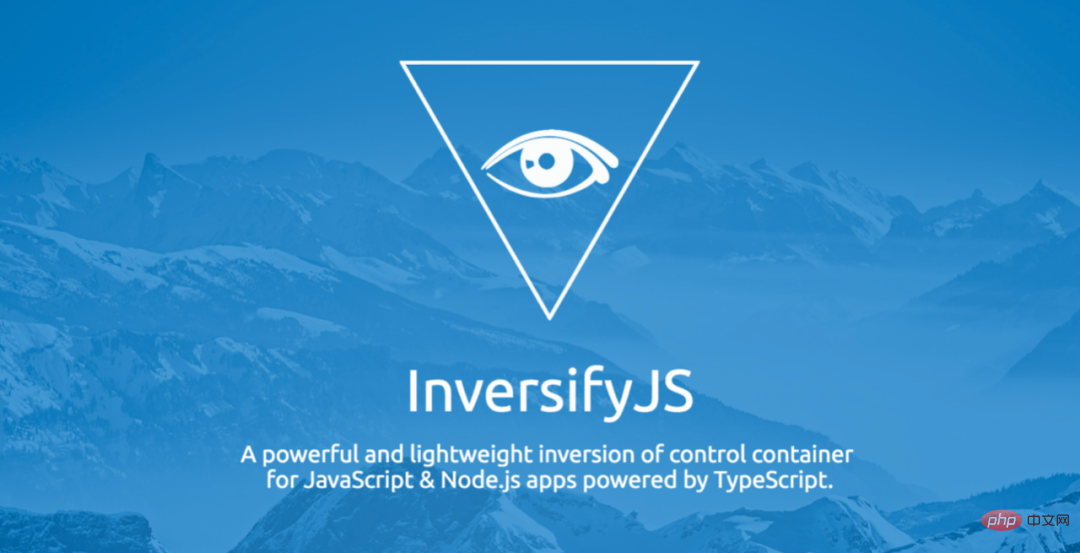Can react implement dependency injection?
react can implement dependency injection. Implementation method: 1. Use props to implement dependency injection, such as "function welcome(props){return...}"; 2. Use context to implement dependency injection; 3. Use dependency injection libraries such as InversifyJS to implement dependency injection.

The operating environment of this tutorial: Windows 10 system, react17.0.1 version, Dell G3 computer.
Can React implement dependency injection?
Can React implement dependency injection?
The following common codes actually all apply the idea of dependency injection. , let’s look at a few examples:
1. Use props to allow dependency injection
function welcome(props) {
return <h1 id="nbsp-Hello-nbsp-props-name"> Hello, {props.name}</h1>;
}welcome component receives props and then generates html. Don’t be surprised, we are most commonly used Props actually applies the idea of dependency injection.
2. Using context is another way to implement dependency injection
function counter() {
const { message } = useContext(MessageContext);
return <p>{ message }</p>;
}Since context is passed down along the component tree, we can use the context inside the component hooks to extract it.
3. Dependency injection can also be achieved using only jsx
const ReviewList = props => (
<List resource="/reviews" perPage={50} {...props}>
<Datagrid rowClick="edit">
<DateField source="date" />
<CustomerField source="customer_id " />
<ProductField source="product_id" />
<StatusField source="status" />
</Datagrid>
</List>
);perPage parameter is passed to the component, and then the component obtains remote data through the REST API.
However, the component does not render data directly. On the contrary, it hands over the responsibility of rendering data to the sub-component
, and
is the caller that sets this dependency.
However, these strategies may be helpful for smaller projects. In some large projects, we often need more flexible extensions. In addition to these basic applications, we also need to better support dependency injection.
Let’s look at a few libraries that extend React’s dependency injection support.
InversifyJS

inversify-inject-decorators
This tool library mainly provides methods such as lazyInject, which can give There is a lazy injection, which means that there is no need to provide dependencies when the object is initialized. This library comes in handy when we cannot change the constructor. In addition, in addition to the literal laziness, another very important function is to allow you to integrate inversifyJs into any library or framework that controls the creation of class instances, such as React.inversify-react
inversify-react is a unique library that performs dependency injection. Just like using React Context.Provider, we can also get a Provider from this library:react-inversify
Although the name is very similar to the previous library, But the approaches of the two libraries are different. This method is closer to the idea of React, because the object is passed as a property rather than instantiated inside the component. Recommended learning: "react video tutorial"
The above is the detailed content of Can react implement dependency injection?. For more information, please follow other related articles on the PHP Chinese website!

Hot AI Tools

Undresser.AI Undress
AI-powered app for creating realistic nude photos

AI Clothes Remover
Online AI tool for removing clothes from photos.

Undress AI Tool
Undress images for free

Clothoff.io
AI clothes remover

Video Face Swap
Swap faces in any video effortlessly with our completely free AI face swap tool!

Hot Article

Hot Tools

Notepad++7.3.1
Easy-to-use and free code editor

SublimeText3 Chinese version
Chinese version, very easy to use

Zend Studio 13.0.1
Powerful PHP integrated development environment

Dreamweaver CS6
Visual web development tools

SublimeText3 Mac version
God-level code editing software (SublimeText3)

Hot Topics
 Guide to React front-end and back-end separation: How to achieve decoupling and independent deployment of front-end and back-end
Sep 28, 2023 am 10:48 AM
Guide to React front-end and back-end separation: How to achieve decoupling and independent deployment of front-end and back-end
Sep 28, 2023 am 10:48 AM
React front-end and back-end separation guide: How to achieve front-end and back-end decoupling and independent deployment, specific code examples are required In today's web development environment, front-end and back-end separation has become a trend. By separating front-end and back-end code, development work can be made more flexible, efficient, and facilitate team collaboration. This article will introduce how to use React to achieve front-end and back-end separation, thereby achieving the goals of decoupling and independent deployment. First, we need to understand what front-end and back-end separation is. In the traditional web development model, the front-end and back-end are coupled
 How to build a reliable messaging app with React and RabbitMQ
Sep 28, 2023 pm 08:24 PM
How to build a reliable messaging app with React and RabbitMQ
Sep 28, 2023 pm 08:24 PM
How to build a reliable messaging application with React and RabbitMQ Introduction: Modern applications need to support reliable messaging to achieve features such as real-time updates and data synchronization. React is a popular JavaScript library for building user interfaces, while RabbitMQ is a reliable messaging middleware. This article will introduce how to combine React and RabbitMQ to build a reliable messaging application, and provide specific code examples. RabbitMQ overview:
 React Router User Guide: How to implement front-end routing control
Sep 29, 2023 pm 05:45 PM
React Router User Guide: How to implement front-end routing control
Sep 29, 2023 pm 05:45 PM
ReactRouter User Guide: How to Implement Front-End Routing Control With the popularity of single-page applications, front-end routing has become an important part that cannot be ignored. As the most popular routing library in the React ecosystem, ReactRouter provides rich functions and easy-to-use APIs, making the implementation of front-end routing very simple and flexible. This article will introduce how to use ReactRouter and provide some specific code examples. To install ReactRouter first, we need
 PHP, Vue and React: How to choose the most suitable front-end framework?
Mar 15, 2024 pm 05:48 PM
PHP, Vue and React: How to choose the most suitable front-end framework?
Mar 15, 2024 pm 05:48 PM
PHP, Vue and React: How to choose the most suitable front-end framework? With the continuous development of Internet technology, front-end frameworks play a vital role in Web development. PHP, Vue and React are three representative front-end frameworks, each with its own unique characteristics and advantages. When choosing which front-end framework to use, developers need to make an informed decision based on project needs, team skills, and personal preferences. This article will compare the characteristics and uses of the three front-end frameworks PHP, Vue and React.
 Integration of Java framework and front-end React framework
Jun 01, 2024 pm 03:16 PM
Integration of Java framework and front-end React framework
Jun 01, 2024 pm 03:16 PM
Integration of Java framework and React framework: Steps: Set up the back-end Java framework. Create project structure. Configure build tools. Create React applications. Write REST API endpoints. Configure the communication mechanism. Practical case (SpringBoot+React): Java code: Define RESTfulAPI controller. React code: Get and display the data returned by the API.
 How to use React to develop a responsive backend management system
Sep 28, 2023 pm 04:55 PM
How to use React to develop a responsive backend management system
Sep 28, 2023 pm 04:55 PM
How to use React to develop a responsive backend management system. With the rapid development of the Internet, more and more companies and organizations need an efficient, flexible, and easy-to-manage backend management system to handle daily operations. As one of the most popular JavaScript libraries currently, React provides a concise, efficient and maintainable way to build user interfaces. This article will introduce how to use React to develop a responsive backend management system and give specific code examples. Create a React project first
 Vue.js vs. React: Project-Specific Considerations
Apr 09, 2025 am 12:01 AM
Vue.js vs. React: Project-Specific Considerations
Apr 09, 2025 am 12:01 AM
Vue.js is suitable for small and medium-sized projects and fast iterations, while React is suitable for large and complex applications. 1) Vue.js is easy to use and is suitable for situations where the team is insufficient or the project scale is small. 2) React has a richer ecosystem and is suitable for projects with high performance and complex functional needs.
 What closures does react have?
Oct 27, 2023 pm 03:11 PM
What closures does react have?
Oct 27, 2023 pm 03:11 PM
React has closures such as event handling functions, useEffect and useCallback, higher-order components, etc. Detailed introduction: 1. Event handling function closure: In React, when we define an event handling function in a component, the function will form a closure and can access the status and properties within the component scope. In this way, the state and properties of the component can be used in the event processing function to implement interactive logic; 2. Closures in useEffect and useCallback, etc.






